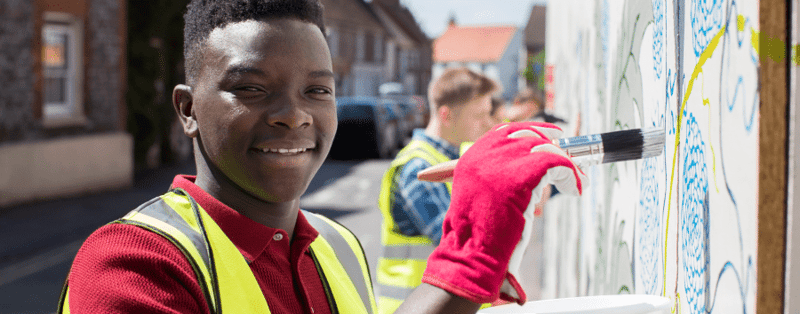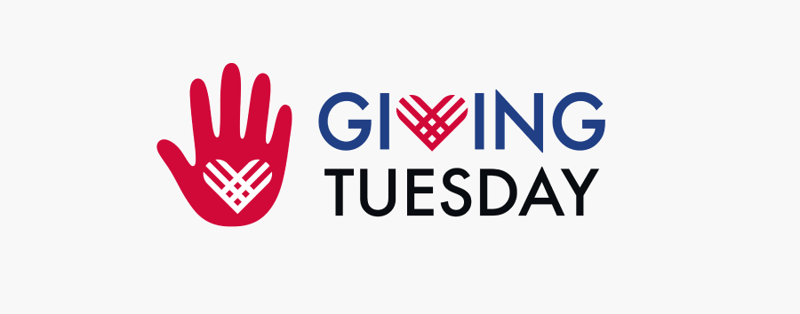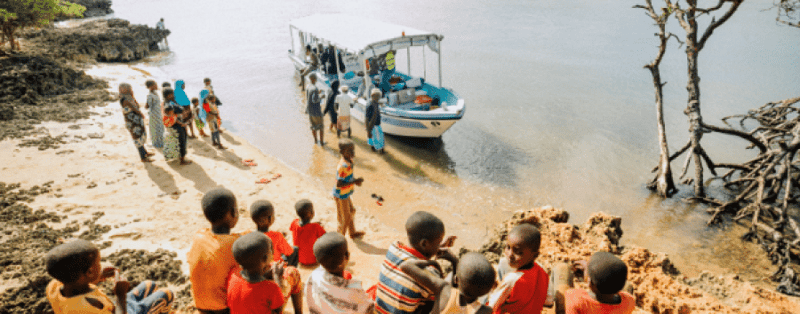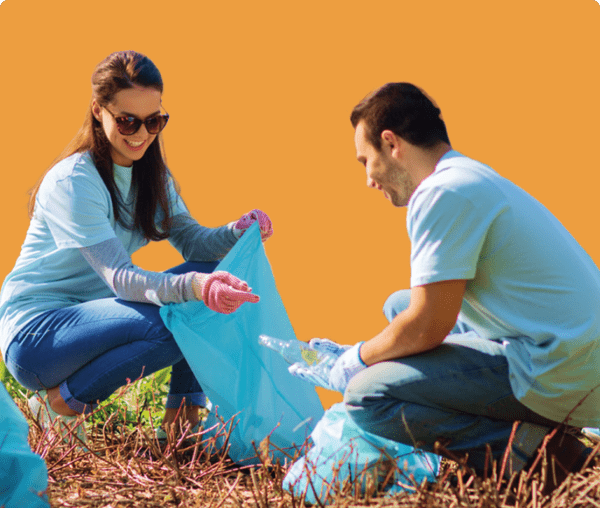What is philanthropy? Why it’s important

Philanthropy is the voluntary act of donating money or time, or both, to a charitable cause. Here at Catchafire we witness daily the powerful impact that philanthropic foundations have on many causes championed by nonprofits. These nonprofits are often small, grassroots organizations with limited resources but motivated by lived experience and cause to work against long odds to make positive impacts. We are humbled by the philanthropic heart and talents of Catchafire volunteers that give their professional knowledge to those same cause-oriented organizations in need of project assistance, advice, and guidance to accomplish missions. Many people might think of famous celebrities and billionaires when “philanthropy” is said out loud, but experience has taught us at Catchafire that philanthropy belongs in every community, at every table, and strengthens us all.
Look up and look around you. What kind of community projects are happening around you? How might a philanthropist or a foundation “find” those projects to contribute and support them? How connected are you to the work that organizations do to better your corner of the world or that of your region? Hold those thoughts and answers for a moment, and let’s dive into some philanthropy background!
Definition of philanthropy
What does philanthropic giving refer to? What is philanthropy and what does it mean for individuals and communities? Oxford Language Dictionary says philanthropy is “the desire to promote the welfare of others, expressed especially by the generous donation of money to good causes.” Yes, philanthropy is as simple as that and far more complex. The Oxford definition is an equation of variables begging for qualifiers:
- What does “generous” look like? Are their contributions limits or minimums?
- “Money” is a multiplier to what degree?
- How does philanthropy impact those that have a need?
- “Good causes” is an individual choice, and when you pop that hood open, those causes look different to many.
History of philanthropy
Many credit George Peabody (1795-1869), who worked in both Baltimore and London, as the father of modern philanthropy as he applied his financial skills to creating endowments for libraries and museums in the United States and created affordable housing in London, England. His generosity and financial talent created an impression on others with financial means including Andrew Carnegie, who gave American towns of all sizes funds to build libraries, resulting in nearly 1,700 community libraries where none had existed before. It is relatively easy to trace lineages of famous philanthropists for every decade or generation exercising philanthropic acts of investment right up to the present day headliners of Warren Buffett and Mackenzie Scott. In fact, the top 25 individual givers in 2022 have given away a collective and astounding $169 million during their lifetimes (to-date).
But as eye-catching as these people and numbers are, philanthropy is a far more diverse universe of individuals, foundations, funding levels, and causes. Foundations can be classified and organized in multiple ways, including organized to address the community needs of a geographic location (community foundation), or by cause issue, such as a medical condition or economic job-development (both types would often be classified a public charity foundation). A foundation might be an expression of family giving from inherited wealth or affluent income (private family foundation). A foundation might also support an organization’s related activities such as a zoo or a library (operating foundation). Occasionally, an asset sale will trigger the creation of a foundation such as when a nonprofit hospital is sold to a private for-profit hospital, and the proceeds of the sale establish an endowment (health conversion foundation).
What qualifies someone as a philanthropist?

What is something you share in common with individuals like Andrew Carnegie or grantmaking institutions like the Ford Foundation?
Andrew Carnegie, the Ford Foundation, famous celebrities and billionaires, corporations spanning a variety of industries, you, your family, and your friends - any of these can be considered a philanthropist. There are various ways to make contributions and be considered a philanthropist.
Philanthropy in action can be quiet or loud events that seed a new idea, give momentum to a maturing cause, or sustain an existing program. Individual philanthropists exist everywhere and there is no qualifying age or purse limit. A quiet and modest neighbor like Oseola McCarty left a legacy of groundbreaking philanthropy by endowing a scholarship at The University of Southern Mississippi that has awarded over $500,000 to students since 1995. The artist Lady Gaga’s philanthropy has found cause in the foundation Born This Way that has given spotlight to youth and mental health through deep work in communities underwritten by ticket sales and partnerships.
Giving Tuesday was created in 2012 as a way to reclaim giving back just as loudly as Black Friday and Cyber Monday retail events. Corporations spanning the pharmaceutical, technology, and finance sectors, among others, have begun to invest heavily in corporate social responsibility (CSR) initiatives as a way to engage employees and give back to the community. Universities engage in philanthropy through endowed research, community partnerships, and distributing scholarships to students.

Business leaders, professionals, your grandparents, even yourself, all have the possibility of giving time, talent, and funds to support the welfare of others. In fact, individuals made up 67% of giving contributions in 2021 to the tune of over $400 billion dollars.
And, philanthropy is not just about donating funds – volunteerism is just as important. That’s where Catchafire comes in. We’re an online, volunteer-matching platform that matches nonprofits with virtual, professional volunteers who provide capacity building support so that nonprofits can focus on their missions and communities. Our network of volunteers from around the world provide support on over 150 types of projects, ranging from one-hour consultation calls on things like strategic planning brainstorms, to short-term graphic design projects like creating a new brochure, to more long-term initiatives like leadership coaching.
Nonprofit staff are typically overextended and under-resourced with a growing list of responsibilities. Volunteers on Catchafire support and strengthen the work of nonprofits by providing support in key areas ranging from graphic design, to HR and finance, to data analysis, marketing, fundraising, and more:
“Our experience using Catchafire has undoubtedly been positive - we have come across various enthusiastic and professional volunteers who care about our work and have supported it. Some have been repeat volunteers and we've been able to rely on them to deliver projects at shorter notice, which has been very valuable. Our communications assets, graphic design, and financial systems have been strengthened by our partnership with Catchafire.”
Clementine
Communications and Development Manager, Safari Doctors

Volunteers on Catchafire are able to turn their skills into something more. By lending their time and talent, they are able to support causes they are passionate about, build their resume and professional skills, develop relationships with local nonprofits, and give back to their communities:
“I didn’t know that you could make such a big difference in somebody’s life by volunteering your skills. I felt like I achieved something with the core values of my education…I was able to have a small part in something really beautiful, and that was a great feeling.”
Corina B.
Volunteer
To date, volunteers on Catchafire have donated over 1 million hours and helped nonprofits save over $2 million! Volunteerism is a different kind of philanthropy that is just as impactful in strengthening local nonprofits and their communities.
Fresh perspectives
Communities long overlooked as philanthropic leaders have increased visibility in the last five years as powerful changemakers in the field of giving back. These philanthropists are flexing their financial leverage to raise awareness and build connections between cause areas, nonprofits, and giving organizations. The writer Janelle Harris Dixon brilliantly summarizes how Black women have organized philanthropic responses over the last 70 years, focusing on creating leadership opportunities and funding for overlooked and under-resourced organizations. Last year, the Ford Foundation invested $15 million to launch the Black Feminist Fund, a global initiative focusing on critical issues faced by Black women.
The leadership organization Native Americans in Philanthropy has shared a statement describing their collective indigenous forebearers as the First Philanthropists, and that creating equity in this space is an ongoing challenge. Since 1983, Hispanics in Philanthropy has mobilized as global changemakers for the Latinx community with support for over 800 nonprofits and other projects that have changed lives. The Disability & Philanthropy Forum is organized to challenge the sector for what inclusive grantmaking opportunities look like for the one billion people worldwide that identify with a disability. The philanthropic support for LGBTQ+ communities is a part of many foundations' giving plans around health care, equality, and civil rights, including leaders like Borealis Foundation.
How do foundations work?
Causes that need sustained philanthropic support or families/geographic regions that want to create a flow of funds to support projects over a longer period of time commonly create a “foundation” to support that effort. Organized around a large endowment that earns money from the invested “endowed” capital, the foundation distributes the earned funds through grants and resource support as determined by staff, board of directors, advisors, and other consultants. The Board of Directors of a foundation provides governance to the whole foundation entity and is tasked as a whole or a sub-committee to set the distribution level for the foundation (ideally with input of staff and community stakeholders).
Private foundations have additional requirements by federal law commonly called the “5% rule” to, at a minimum, give 5% of the average value of the endowment to “qualified” organizations in a given fiscal year. Some foundations strive to go beyond distributing the 5% threshold in giving and others adopt a “spend down” model where they intend to distribute all capital and earnings within a determined time frame and close the organization on a particular future date. While spend-down foundations are unusual in the field, they are often an organization very passionate about creating deep change. One such example can be found in The Kataly Foundation, a leader and partner for justice and restorative economies. A simple primer of foundation types and terms can be found here on a Minnesota Council on Foundations webpage.
Catchafire hosted an event to discuss how foundations could build collective trust with their grantees, and work to redistribute power to their communities. Many foundations are looking to diversify and bring innovation to the public sector by embracing the idea of trust-based philanthropy:
“Trust-based philanthropy is an approach to giving that addresses the inherent power imbalances that exist between funders, nonprofits, and the communities they serve. The core of this approach is about redistributing power in service of the healthier and more equitable nonprofit ecosystem.”
Shaady Salehi
Director of the Trust-Based Philanthropy Project
Did you feel that impact?
Philanthropy can sometimes feel like a big, removed world where good things happen to other people, in other communities, in faraway places. However if you live in the United States, I guarantee it has impacted your life, no matter where you are. If you have dialed 911 or had someone dial 911 on your family’s behalf, you have felt the impact of philanthropy.
For years, first responders were frustrated by complicated and timely responses to emergencies by both geographical and expertise jurisdiction. When your house was on fire or you had a car accident, help arrived if you knew the local phone numbers for each entity you might need. State and federal policies tried to organize a comprehensive system, but it was a large grant by the Robert Wood Johnson Foundation that began the dialing service of 911. What began as a grant program to 44 communities in 32 states has grown into the modern 911 system we know today.
Why philanthropy is important in 2022

After the political and social movements of the last few years, an ongoing pandemic coupled with economic uncertainty, equity has become a crucial discussion topic in the philanthropic sector.
We’ve seen firsthand that there is a historic underinvestment of Black, Indigenous, and people of color (BIPOC)-led nonprofits and communities. These nonprofits and communities were hit even harder during the pandemic, as they faced an overwhelming increase in demand for services, without an increase in funding. Catchafire provides critical value for heavily resource-constrained organizations, and disproportionately serves more BIPOC and Black-led organizations to ensure that they get the support services they need for their communities.
In today’s philanthropic landscape in the United States, Catchafire and its grantmaking partners are embracing trust-based philanthropy, community building, transparency, and the importance of representation:
“We are examining ways that our committee and our Board are more representative of the community and closest to the issues…Why are we recruiting people who would likely block good, equitable work to begin with? Why are we giving them a voice with the greatest power to veto something if they have no lived experience, no real expertise?
Do they have the agency to block it? We have to shift our thinking - we focus too much on mitigating the blockers and centering the voice of the blockers than those who have been consistently blocked.”
Aiyana Marcus
Charlottesville Area Community Foundation
With a recession looming over the United States, the time to act is now. Catchafire recently launched Strong Communities, a philanthropic initiative to expand access to Catchafire to more BIPOC-led organization in ten cities:
- Atlanta
- Chicago
- Dallas Fort-Worth
- Detroit
- Houston
- Los Angeles
- Miami
- New York City
- Philadelphia
- Washington D.C
Research identified these ten cities based on their makeup of BIPOC-led organizations, at-risk communities, and the need for operational support based on an economic downturn. Catchafire services ensure that power is redistributed back in the hands of nonprofits, allowing them to post unlimited projects, and connecting them to the volunteers who can provide the capacity support to get it done.
Giving back with Catchafire
You don’t have to be billionaires to make a difference! Remember at the top of this article when you were thinking about the community projects going on around you? Or maybe you thought of community issues that don’t yet have enough champions behind them. That’s right, philanthropy rests with us all. Now is your moment.
At Catchafire we know the value and the thrill of giving back to causes and communities individuals care about. We offer a virtual way for professionals to donate their valuable 9-5 skills to nonprofits that need expertise help on specific projects. Over 80,000 professionals have given two million volunteer hours to help nonprofits achieve their goals.
Thousands of nonprofits have been given access to Catchafire resources, including volunteer matching, through the support of foundations that recognize that community organizations need specialized support to accomplish tasks. Check out the Catchafire impact page to learn more and if you are with a foundation, ask us how we can work together alongside your existing grantmaking for impact.
There are many ways to get involved with Catchafire:
- If you’re a grantmaker and would like to learn more about equipping nonprofits in your community with responsive, high-quality operational support, let’s connect. Email us here.
- Learn more about our Strong Communities initiative, a 10-city campaign that provides essential operational support to BIPOC nonprofits that are historically disconnected from resources. Join us in supporting 5,000 high-need nonprofits.
Sign up today to volunteer and directly support nonprofits and communities. Lend your expertise and boost capacity of nonprofit staff through one hour consultation calls and longer-term projects. Projects range from 1-50 hours across several departments such as design, marketing, operations, finance, IT, and more.



